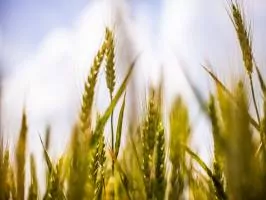
Agriculture And Productive Land Are The Biggest Current Property Investment Opportunity
The Biggest Investment Opportunity Of Our Age
An important focus at last week’s Global Property Summit in Panama was agriculture. As we discussed with the help of agricultural and other relevant industry experts, an investment in productive land is the biggest opportunity of our age.
The global population will surpass 9 billion by 2050. The percentage of undernourished people around the world has dropped from 18% to 11% over the past two decades (suggesting more food consumption per capita). Meantime, available arable land is decreasing due to increasing housing needs.
These and other factors, such as global warming, rising sea levels, and potable water shortages, lead anyone paying attention to the conclusion that investing in food production is a good idea.
The challenge is to identify attractive options in this sector for the individual investor.
During our “World’s Best Investment Class—Why Agro-Buys Should Be Part Of Every Portfolio” panel discussion last week, our experts agreed on the priority fundamental to remember when vetting opportunities—namely: You’ll get the best returns from specialty products. Commodity products such as soy, corn, apples, and grapes all have ready markets, but they also have global market prices. Specialty products, on the other hand, can garner premiums in the marketplace.
A specialty product could be a specific kind of varietal (such as the one being grown at the mango plantation in Panama we looked at during last week’s event), or it could be an organic version of a commodity product (say, apples). In fact, our experts last week identified organic produce as perhaps the top specialty crop choice right now.
In the United States, organic produce is still a relatively small part of the food market, but demand is growing rapidly… while prices are rising. Consumers are accustomed and willing to pay more for organic. The “organic premium,” if you will, can boost annual investor yields and IRRs from a reasonable range of 8% to 12% to more than 15% without generating much of any additional risk.
Others Agricultural Investment Options
Other specialty options include growing things like lettuce in markets like the Middle East with limited amounts of arable land. Aquaponics is an interesting investment option in this case, a solution in any region where fertile land is in short supply or where farmers want to get increased production from the same amount of land. Aquaponic farms can generate up to 30 times the protein production per acre compared with traditional crops. Additionally, you can set up an organic aquaponic system with fish providing the required fertilizer, creating a production loop to maximize efficiencies.
The third agricultural investment option we discussed at last week’s conference was timber. Trees aren’t a sexy investment but a long-term, buy-and-wait option. It takes much longer to grow a tree to harvest than a mango or a head of lettuce. Still, timber investments have a place in most every portfolio, as the returns are good and come with relatively low risk and volatility.
Depending on the tree, your expectation to harvest should be 12 to 30 years after planting. Hardwoods such as teak, mahogany, and cedar take longer, while soft woods such as pine and eucalyptus require less time before cutting. Whatever the timeline to harvest, you should look for an annualized return of at least 12% over the life of a tree farm.
One tree farmer I know says he prefers trees over other agricultural options because trees don’t talk back. In other words, once planted, trees require little maintenance relative to other types of farming.
One specific recommendation our panelists made during last week’s discussions was that, no matter what kind of agriculture you choose to invest in, be sure you’ll have enough production for export, understanding that big farms require a lot of capitalization. This creates a challenge for the small investor and is why, for last week’s event, I worked hard to identify opportunities that make it possible for almost any investor to connect with and benefit alongside large farming operations.
If you have US$1 million or more to invest, you could buy a farm in Uruguay, hire an operator (a company to farm the land for you), and expect to earn 5% to 7% per year. That’s a decent return when farming commodities.
With perhaps as little as US$100,000, you could set up a small operation in Belize or Panama, producing for the local market. However, this requires knowing something about farming.
Or, with as little as US$15,200, you could invest in one of the turn-key opportunities presented during last week’s event.
Lief Simon
“Lief, I am a reader of several of your newsletters, and I have a question that I have not seen addressed: When you rent out a property overseas, you are depending on whether the legal system is owner friendly or tenant friendly. For example, I know firsthand that in southern Spain (Andalucia), there are so many cases of bad tenants (who do not accept increases in rent) that a large number of houses on the Costa del Sol are left vacant, rather than being rented out by owners.
“Could you address this?”
A.M.
It’s an important concern for the overseas landlord and the reason I recommend focusing on short-term rather than long-term rental markets. On the Costa del Sol, for example, I wouldn’t worry about the risks of renting long term, because I wouldn’t try to rent long term. This is an active short-term rental market.
We discussed it along with other interesting short-term rental markets right now in detail at my Global Property Summit last week.



